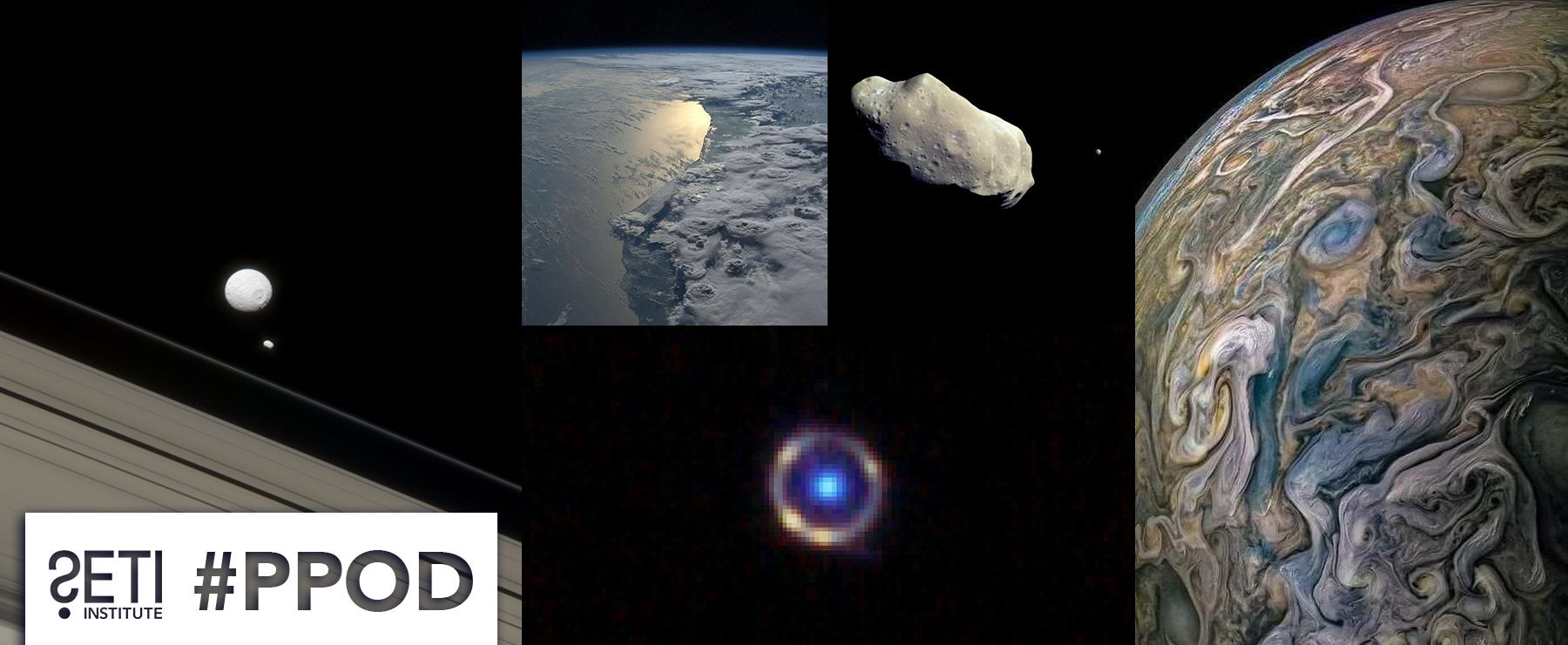
Planetary Picture of the Day
Week of August 29, 2022
Views from Cassini, the International Space Station, Galileo, Juno and JWST. Just wow!
Monday, August 29, 2022
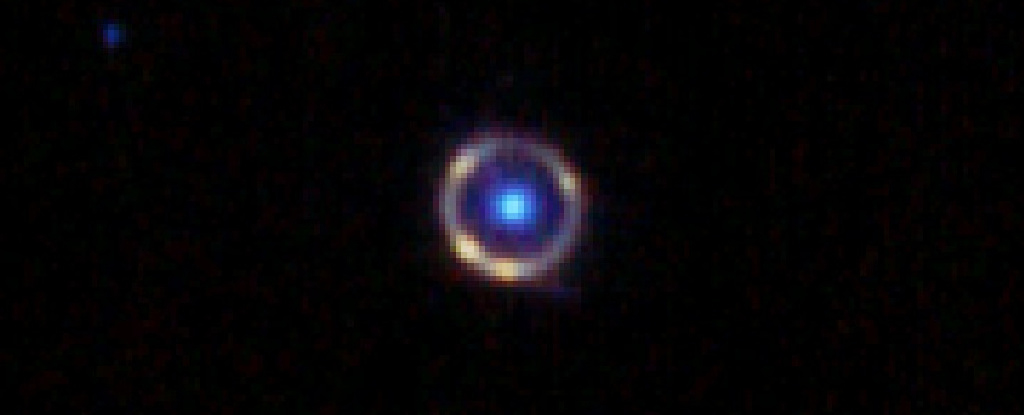
Credit: NASA, ESA, CSA, STScI
Processing: u/spaceguy44
Almost Perfect Einstein Ring
An Einstein ring occurs when a distant galaxy has been magnified and warped into an almost-perfect ring by a massive galaxy in front of it. The galaxy in question is called SPT-S J041839-4751.8, and it's 12 billion light-years away. We wouldn't be able to see this galaxy at all if it wasn't for that Einstein ring.
And the presence of Einstein rings, in addition to looking beautiful, allows us to study these otherwise almost impossible to see galaxies. This process is known as gravitational lensing, and it's an effect predicted by Einstein – hence the name. The effect only happens when the distant galaxy, the closer magnifying galaxy, and the observer (in this case the Webb Space Telescope) line up.
Tuesday, August 30, 2022
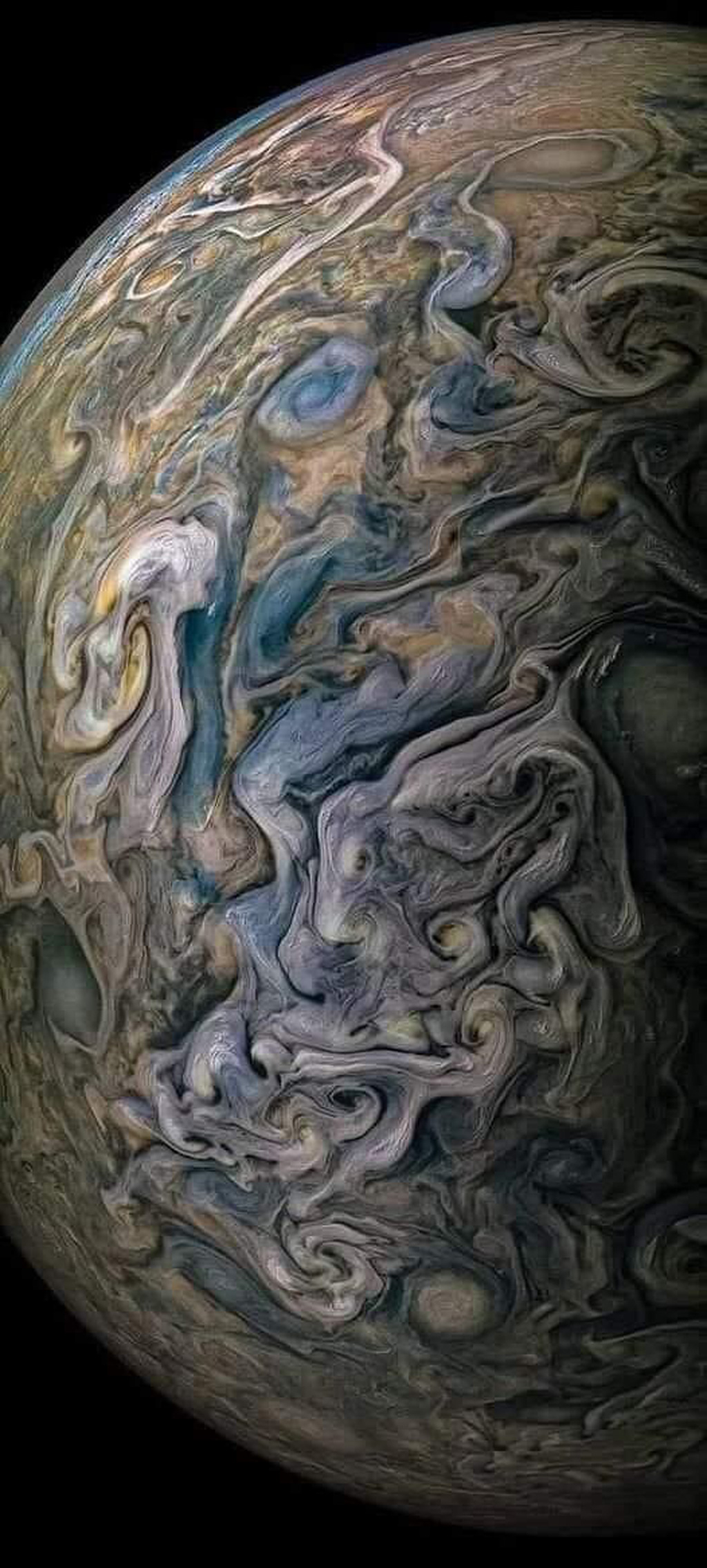
Credit: NASA/JPL-Caltech/SwRI/MSSS/Kevin M. Gill/Michael Galanin
Stunning Clouds
This close view of Jupiter was captured by NASA's Juno spacecraft, using its JunoCam, during perijove 26 back in April 2020.
Wednesday, August 31, 2022
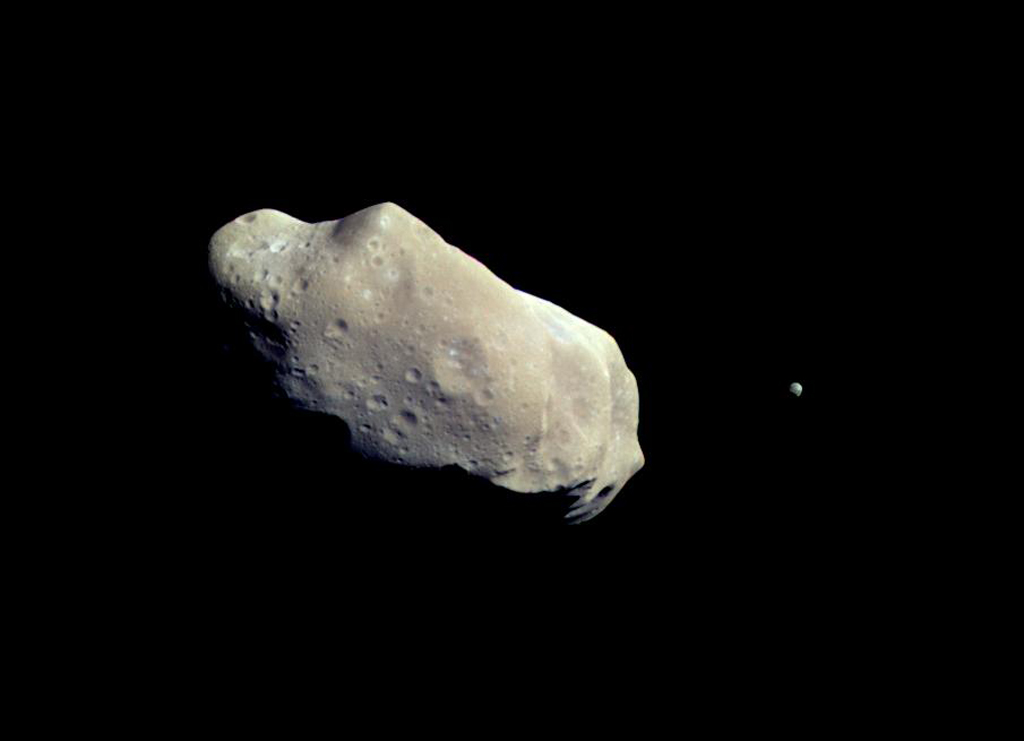
Credit: NASA/JPL/USGS
Ida and Dactyl
In 1993, the Galileo mission imaged Dactyl, the first known moon orbiting an asteroid. This color picture is made from images taken by the imaging system on the Galileo spacecraft about 14 minutes before its closest approach to asteroid 243 Ida on August 28, 1993. The range from the spacecraft was about 10,500 kilometers. The images used are from the sequence in which Ida's moon was originally discovered; the moon is visible to the right of the asteroid. This picture is made from images through the 4100-angstrom (violet), 7560 A (infrared) and 9680 A (infrared) filters. The color is 'enhanced' in the sense that the CCD camera is sensitive to near infrared wavelengths of light beyond human vision; a 'natural' color picture of this asteroid would appear mostly gray.
Thursday, September 1, 2022
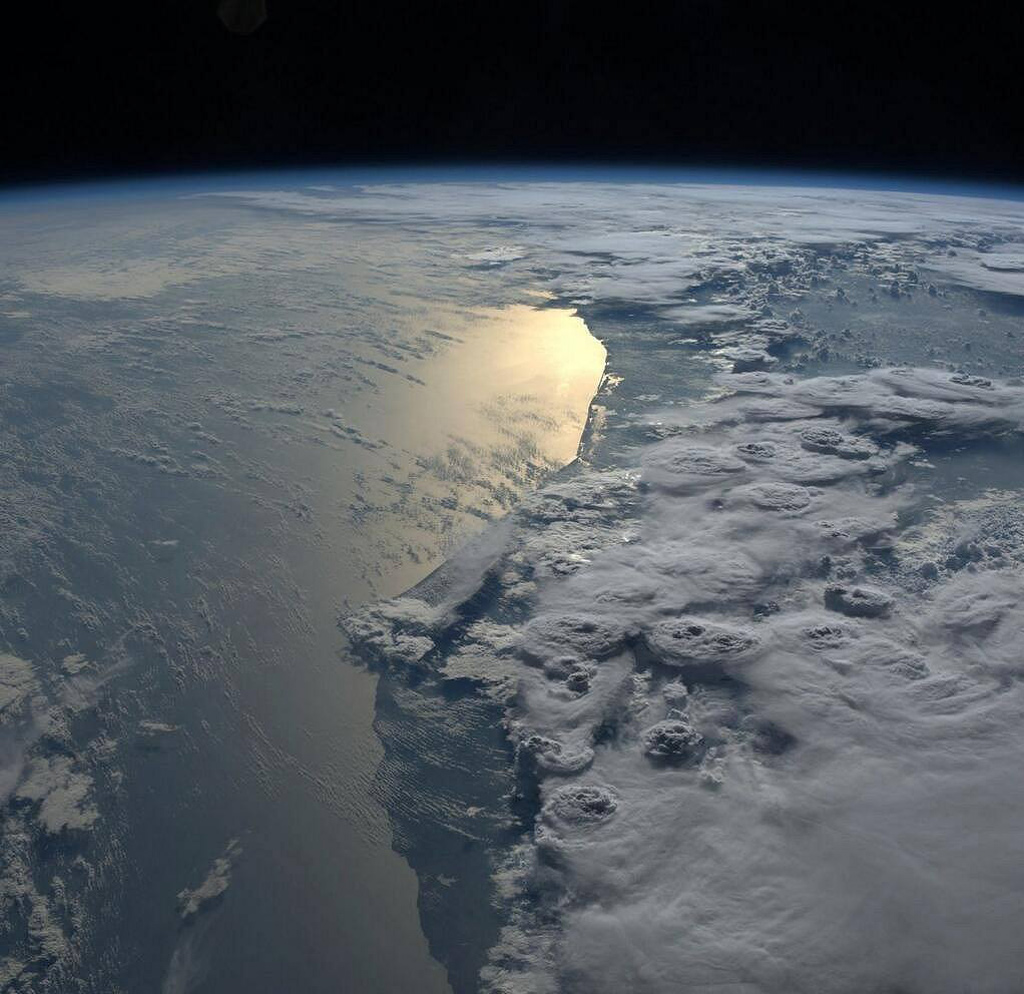
Credit: NASA / Karen Nyberg
Stormy Ghana
Beautiful storm clouds above Ghana as seen from the International Space Station, taken by astronaut Karen Nyberg on October 8, 2013.
Friday, September 2, 2022
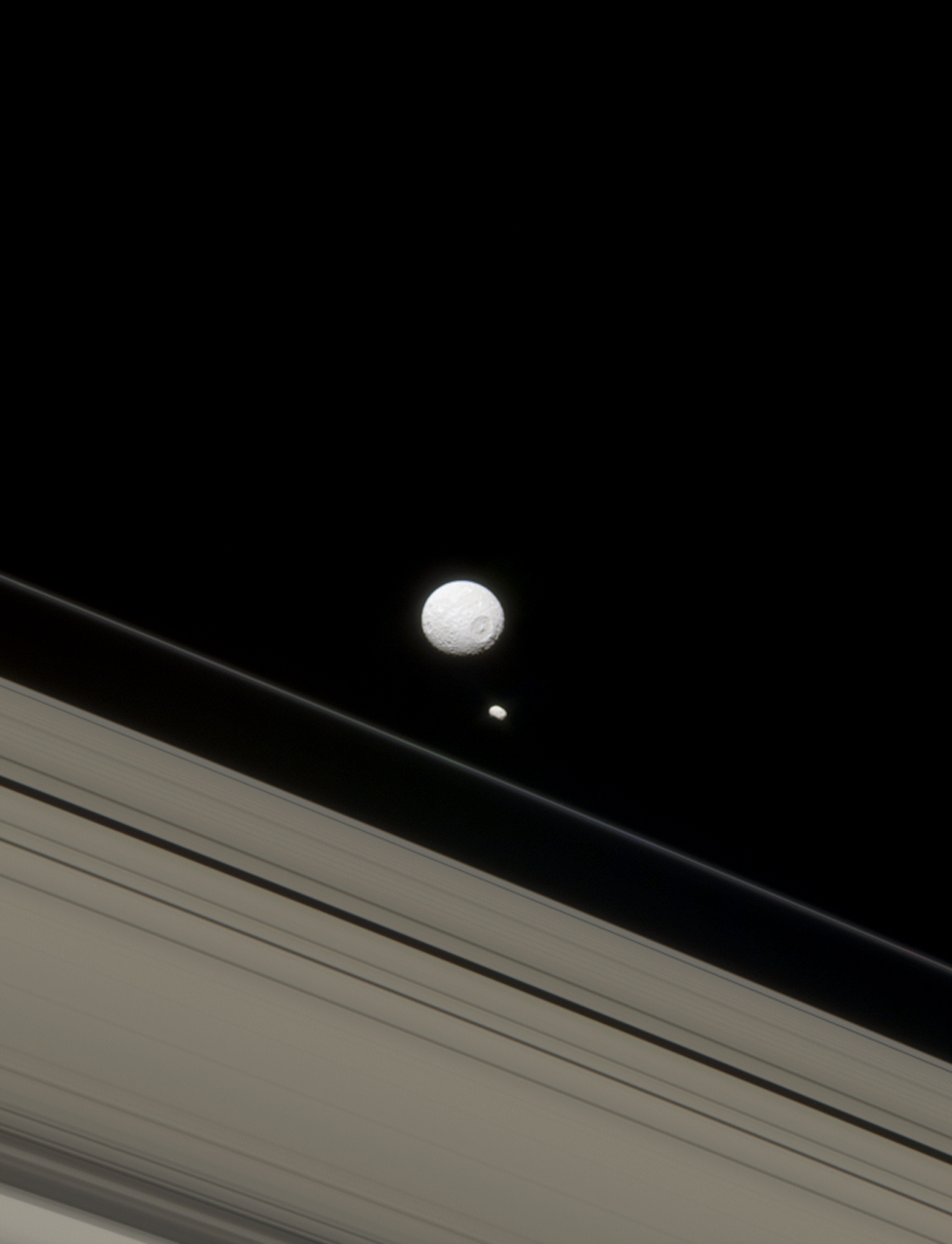
Image Credit: NASA /JPL-Caltech / Space Science Institute / Gordan Ugarkovic
Mimas and Pandora
This image, taken by NASA's Cassini spacecraft on 14 May 2013, features two of Saturn's moons Mimas and Pandora (the smaller of the two), reminding us of how different they are. With its large crater, Mimas appears like a cyclops gazing off into space. The Herschel Crater is 130 kilometers in diameter on a moon that is 396 kilometers across. Pandora's small size means that it lacks sufficient gravity to pull itself into a round shape like its larger sibling, Mimas. Researchers believe that the elongated shape of Pandora (81 kilometers across) may hold clues to how it and other moons near Saturn's rings formed.





